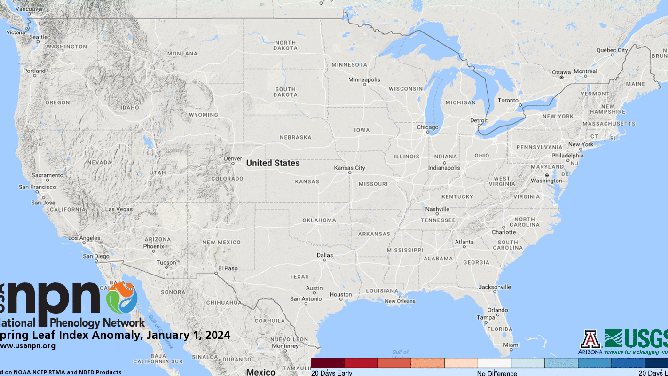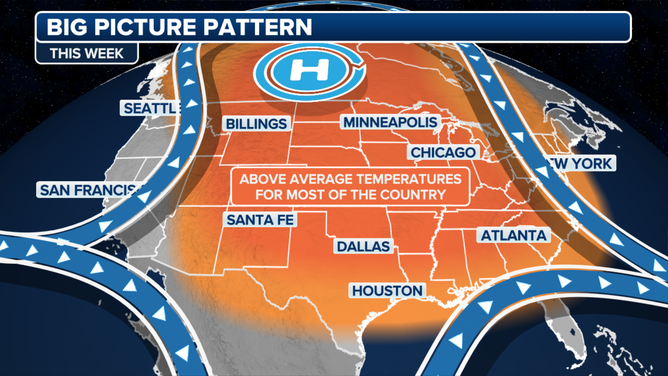Signs of spring begin around nation with sprouting leaves and increased pollen levels
Model depictions use data from leaves and first blooms of the cloned lilac cultivar and two cloned honeysuckle cultivars. These species are used because they are usually the first woody plants to bloom and are universally found across much of the country.
Spring allergies and pollen—How to protect yourself
Dr. Gina Coscia of Northwell Health on the best ways to beat sneezing and sniffling this spring.
The spring growing season has started along the country’s coasts, but with a warmer and drier winter than is typical, more communities will soon begin seeing early blossoms.
Data provided by the USA National Phenology Network shows many communities along the West Coast, Gulf Coast and Southeast are seeing the initial sprouting of leaves after the dormant winter.
The group says cities such as Miami and Houston are running about five days behind schedule, but some locations in the Carolinas, Southwest and Golden State are more than a week ahead of schedule.
Data stems from observations of the first leaves of lilacs and honeysuckles, which are usually the first indications that a more widespread leaf outing event could be on the way.
"These are among the first plants to leave out, which is what our leaf index is measuring, and they’re also among the first to bloom," Erin Posthumus, an outreach Coordinator at USA National Phenology Network, previously stated. "They do correspond to native species that are the shrubs and other plants that would be in the understory of a deciduous forest."

USA National Phenology Network leaf-out animation.
(USA National Phenology Network / FOX Weather)
Communities where leaf production is ahead of schedule might also want to monitor pollen levels, which tends to coincide with where vegetation starts to rejuvenate.
Pollen levels in parts of Florida, Texas, Louisiana and California are in the medium to high stage, with junipers, ash trees, and grasses already leading to flare-ups of allergies.
WHY SEASONAL ALLERGIES ARE BECOMING WORSE?
No significant invasions of cold air in sight
Runs of major computer models show a continued warm weather streak that will last until at least mid-February for the majority of the Lower 48.
The recent stint of warm weather has caused ice jams along rivers in the Midwest and flooding where snowfall has melted.
The country peaked in snow coverage on Jan. 17 and has seen around a 2% daily decline in ground cover during the past two weeks.
Without a substantial snowpack in place, chances for a significant arctic air outbreak are reduced as the ground cover typically acts as a conveyor belt delivering air far south from its origins.

Early February weather pattern
(FOX Weather)
The absence of cold air during winters is not a new phenomenon, as vegetation has observed and responded to decades of warming temperatures.
The National Park Service, in coordination with half a dozen organizations, have studied the leaf-out process at hundreds of its sites and found many have exhibited signs of extreme earliness.
Staff said that early springs make the parks more susceptible to specie invasions and other ecological matters.
The USA National Phenology Network has made it easy to determine how your community is warming up compared to previous years. Users can search data by zip codes to determine how far ahead or behind the growing season is compared to normal.

(FOX Weather)
